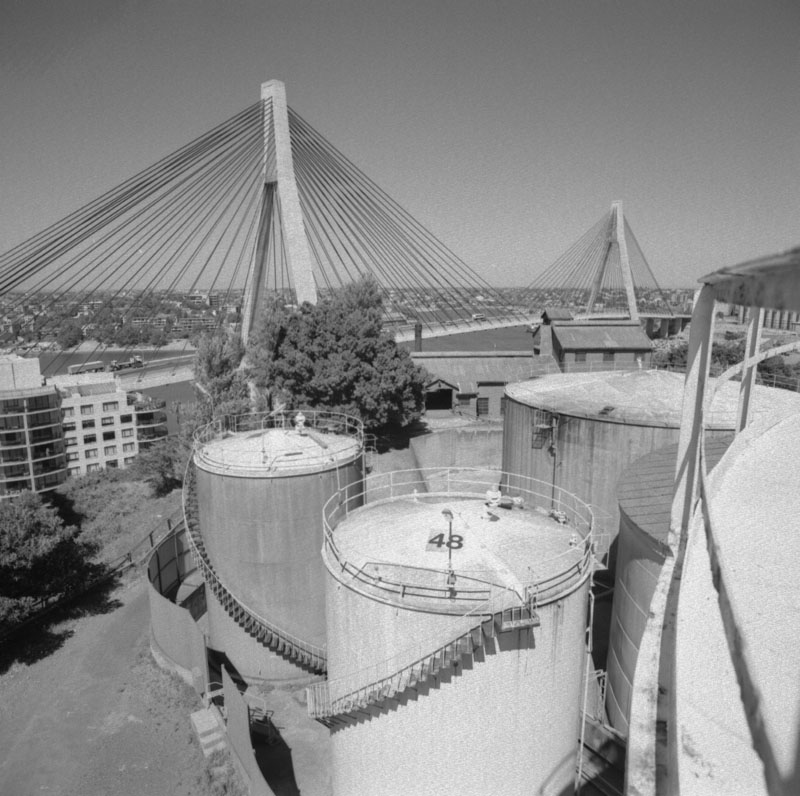Silk
Date Built: 2012
Architect: Tony Caro Associates
19 storeys, 88 apartments, 12 terraces. Overlooks Waterfront Park. Site of CSR storage tanks
Sugar Dock & Silk
1990
In 1984, as industries quit Pyrmont, the State government resolved to redevelop the area, and in 1987 decided that the peninsula needed its own plan. In the same year CSR asked Lend Lease to study the feasibility of redeveloping the industrial site.
Many studies ensued: the Pyrmont-Ultimo Heritage Study (1990), a Social Impact Assessment (1991), and a Regional Environmental Plan (1992). In 1993 the Pyrmont-Ultimo Urban Development Plan was approved, and so was a Master Plan for Pyrmont Bay.
As historical sources the most useful studies were archaeological surveys, summed up in the Sydney Harbour Foreshore Authority’s Jacksons Landing Interpretation Strategy, and Jane Bennett’s extraordinary series of paintings. Later, John Broadbent complemented these studies with his comprehensive history of the ecology of the peninsula.
Pyrmont residents were deeply divided: some were forced to leave the area, others welcomed development, but in 1979 opponents formed UPROAR (Ultimo Pyrmont Residents Opposed to Arbitrary Redevelopment) and endured years of being consulted (or, in their view, coerced). In August 1992 a few activists proclaimed the Republic of Pyrmont. In this brilliant but forlorn gesture the republicans issued visas, and publicised their critique of top-down planning, and in particular to Jacksons Landing, the casino and the helipad.
Meanwhile in 1997 Lend Lease bought the CSR site, and by April 1999 Jacksons Landing was under construction. Sugar Dock and Silk were among the last three buildings completed. The demolition of the caneite factory and the storage tanks allowed the architects to take advantage of wide views across the water to Balmain, White Bay and Glebe.








